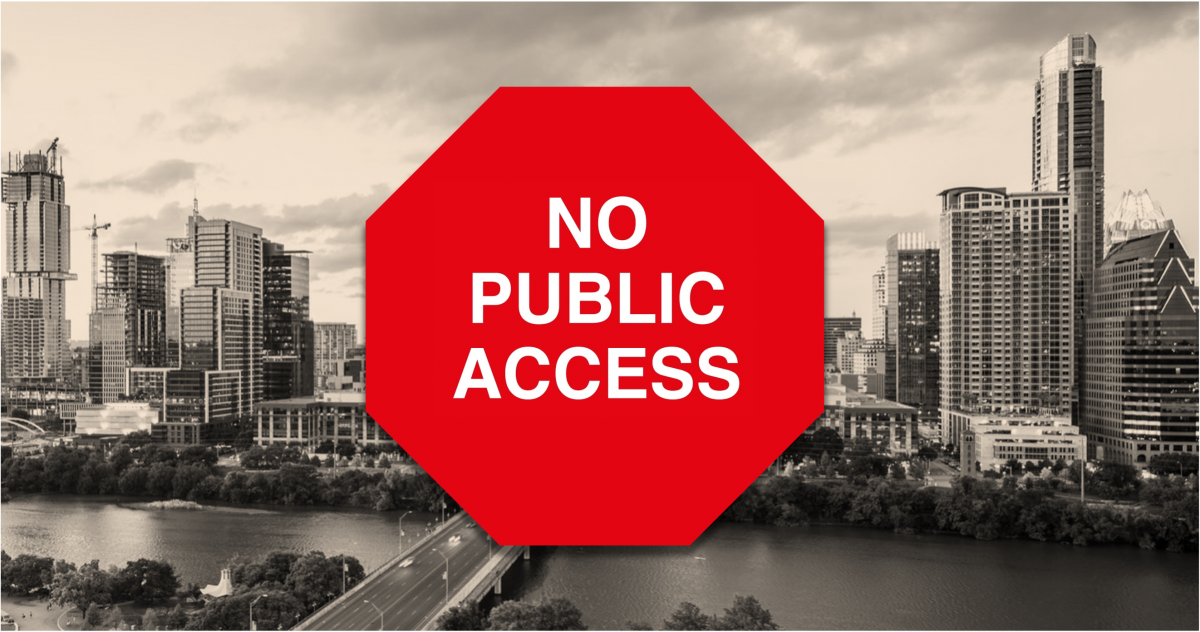
KEY POINTS:
- The City of Austin failed to release a copy of the city council’s “VMU2” vertical mixed-use ordinance in a timely fashion
- City staff worked on the ordinance behind closed doors for six weeks
- The final ordinance reduces compatibility standards and removes notice and protest rights
A strange thing happened back in mid-June, after the Austin City Council passed its “VMU2” ordinance: City Hall failed to release a copy of the new law.
VMU2 sets new rules for the development of vertical mixed-use (VMU) buildings, an issue that impacts thousands of Austinites living near our community’s transportation corridors. Unfortunately, the council’s deliberations on the matter were confusing, chaotic, and took place late at night, long after public testimony had ended.
Rather than release the language approved by council members, the city’s unelected staff sat on VMU2 for over six weeks, drawing up their own version of the ordinance—one that appeared to approximate the council’s intent. That document finally went public a few weeks ago. Here’s what it does:
Increases the maximum height of all VMU buildings by 30 feet
Under VMU2, all properties zoned for vertical mixed-use buildings will be allowed an additional 30 feet of height in exchange for a negligible amount of affordable housing. This map shows affected properties.
In addition to parcels with VMU zoning, parcels three acres or larger without the zoning designation could also be allowed developments as high as 90 feet. The areas shaded yellow in this map show where these developments may start appearing.
“Relaxes” compatibility standards along Project Connect’s Orange and Blue lines
Compatibility standards govern the height and setback of big buildings near residential areas, providing our community’s existing neighborhoods with buffers from large, multistory developments. The new VMU2 ordinance reduces those protections by 80% along Project Connect’s Blue and Orange lines, allowing the development of massive buildings within 100 feet of modestly sized homes:
ABOVE: The blue rectangle on the left shows the minimum distance between existing homes and 90-foot buildings before the “VMU2” ordinance was passed (420 feet). The blue rectangle on the right shows the minimum distance under VMU2 (100 feet). Compatibility standards end at 520 feet.
Because of VMU2’s 30-foot height expansion, many of those new structures could reach 90 feet in height.
Robs residents of their state-mandated right to notification of VMU2 zoning changes, along with their right to protest them
Under Texas law, property owners have the right to be notified of zoning changes affecting their properties and the right to protest those changes. Those rights were recently upheld by the state’s 14th Court of Appeals in Acuña, et al. vs. City of Austin, et al., a landmark legal action filed by a group of Austin residents.
When they voted on its VMU2 ordinance, council members removed the language that conformed to the Acuña decision. Austinites whose homes and businesses are impacted by the new law will not be notified by the City of Austin, and they will not be given an opportunity to protest the zoning changes.
Mayor Steve Adler and Mayor Pro Tem Alison Alter led the charge against property owners, and they succeeded in passing the ordinance despite a defense mounted by council members Ann Kitchen and Kathie Tovo:
“[F]undamental fairness and respect for the public requires that people be notified when land use around their homes is being changed.”
— Council Member Ann Kitchen
June 9, 2022
“I think it’s important to stick to what we have heard again and again from the public what they want us to do, which is to notify them when there are proposals that are significantly different than the zoning on the ground. They want the opportunity to participate in them, as my colleague said. And I think it’s of grave concern to me that we’re moving forward potentially with that vote in a way that doesn’t allow folks the opportunity to have petition rights.”
— Council Member Kathie Tovo
June 9, 2022
The Austin City Council’s VMU2 ordinance is the product of a deeply flawed process, and the final product tramples Austinites’ rights in troubling ways. Is this the start of a new pattern? As it takes up broader land-use issues, will the council continue catering to developers, with the public kept in the dark?
Stay tuned!